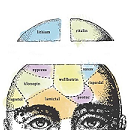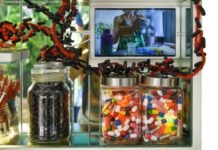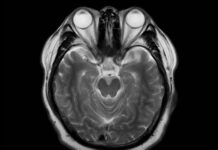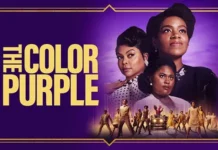I was nineteen when I shot a friend in my unit during a military operation.
It was a tragic mistake, part of a traumatic chain of events I witnessed and took part in during my service in an elite Israeli combat unit. We saw things no one should see. And yet, like so many others, I was never asked how I felt, never offered the chance to process what had happened. There was no space for that. The system didn’t see trauma—it saw weakness. So I did what many soldiers do: I started drinking.
Not immediately after my discharge, but shortly after, I became addicted to drugs and alcohol.
I didn’t understand at the time that these substances were building a wall between me and the trauma. They allowed me to function, to live something that resembled a normal life. I studied, worked, met the love of my life, got married, became a father. True, some PTSD symptoms began to leak through the fog—nightmares, anxiety, flashes—but each time they did, I just drank more, smoked more, used more. I thought I was protecting myself. I was just reinforcing the wall.
What I didn’t understand—and what I’ve learned over the years—is that trauma thrives in silence. And silence is often built from shame.

Research shows that early intervention makes a huge difference in treating PTSD. But when trauma is wrapped in shame, people don’t seek help. Especially men. Especially soldiers. We’re trained to suppress, to push through, to be strong. And when the wound is invisible, it becomes easy to deny it’s even there.
For years, I lived with that denial. But PTSD doesn’t stay quiet forever. It erodes relationships. It makes everyday life harder—partnership, parenting, holding down a job. It isolates you. It makes crowds unbearable. The world becomes full of triggers, full of hidden dangers.
Still, I didn’t know what it was. I was stuck in the mindset so many male soldiers share: if you’re wounded on the inside, it means you’re weak. And weakness is shameful. So I kept going, pretending I was fine—believing I could beat it on my own.
But untreated trauma doesn’t go away. It’s like a small monster that grows larger, heavier, and more violent with time. I managed to live with that monster for many years. At first, with drugs and alcohol. Later, after rehab, I became dependent on psychiatric medication—SSRIs, Quetiapine, Clonazepam. And still, none of it saved me when the monster erupted.
It happened during the COVID-19 pandemic. Isolated, under economic stress, I was invited to a reunion with my old army unit—men I hadn’t seen in thirty years. It was moving. And it broke me. After that meeting, everything collapsed. No medication helped. I spiraled into full-blown panic attacks that lasted for weeks, then months.
For the first time, the military acknowledged its responsibility and began to support me. I entered real therapy—for the first time. We worked through the battlefield memories, the psychological wound, the moral injury, the shame. And I began to understand: a psychological wound is not so different from a physical one. In some ways, it’s worse. You can replace a limb with a prosthetic. You can’t replace a soul.
But true healing began only when I started writing my novel.
Dog is a fictional story about an officer who doesn’t understand his own trauma until it explodes and throws him to the margins of society. But in writing it, I was finally confronting my own story. The process of creating the book became the most honest, raw form of trauma work I’ve ever done. I discovered that writing—like art in general—is not just catharsis. It is a path toward healing.
That experience—writing my way through the chaos—changed something fundamental in me. It didn’t just help me tell my story. It helped me survive it.
As I continued to write, I began reading more about the connection between creativity and trauma recovery. I came to understand that the process I had stumbled into—sitting alone, shaping memory into narrative—wasn’t just therapeutic for me personally. It was part of a deeper truth.
Art heals.
Whether it’s writing, painting, dancing, sculpting, singing, or composing—creative expression allows trauma to move, to be witnessed, to be transformed. It doesn’t replace therapy. And it doesn’t replace medication for those who need it. But it is a vital third pillar of recovery that too often gets overlooked.
In my case, writing was the beginning of healing. It pulled me out of the abyss and gave me structure, voice, and purpose. It gave me back some sense of authorship over a life that had felt hijacked by memory.
Trauma breaks things.
Creation mends them.
From my perspective, the mental health system does not encourage creativity. It doesn’t guide patients toward art or expression. Instead, it funnels them into psychologist appointments—and more often, into medication. The system seems far more comfortable when you’re sedated, quiet, and manageable.
In this model, healing isn’t the goal. Compliance is.
It rarely includes or legitimizes professionals with alternative backgrounds—especially those trained in expressive arts, creative therapies, or integrative approaches. In fact, these practitioners are often dismissed as unscientific, unprofessional, or fringe. And yet, they are often the ones who reach people like me—people who don’t respond to talk therapy alone, or for whom pills only mute the pain but never address its source.
I’ve come to believe that just as alternative schools—Waldorf, democratic, art-based—are thriving while traditional education systems struggle, so too must healing from trauma evolve. The old clinical model, rooted in diagnosis and sedation, is no longer enough. What we need is a cultural shift—one that validates creativity not just as self-expression, but as a legitimate, essential form of treatment.
Trauma is not a pathology to be silenced.
It’s a story that needs to be told—
in words, in color, in movement, in sound.
Only then does healing begin.















This really resonated. When I was struggling, painting helped me in ways therapy couldn’t—it gave shape to the chaos. The system often pushes silence over expression, but creativity isn’t a luxury. It’s a lifeline. Thanks for voicing what so many of us feel.
Report comment
You are so right! Expressing yourself through some form of creativity is a great form of therapy!
Report comment
Thank you for this. You put it so beautifully—creativity is a lifeline. Words, like paint, can carry what silence can’t. I’m grateful we’re not alone in this.
Report comment
I almost did not read past the first couple sentences, because I was afraid it might make me cry. In the summer of 2009, I met a couple of Israelis outside a hotel in downtown Chicago. They were speaking in Yiddish, which sounds similar to German. I asked if they were from Germany, and this greatly offended them. They told me the Germans were the enemy, and that they were from Israel. I apologized for my error, and we made polite small talk, until we finished our cigarettes. But, it had never occurred to me in my waking hours, prior to that conversation, that for at least some Israelis, WWII never ended. And this gave me a great deal of empathy for the people of Israel. I pray all the wars, everywhere on this planet, end soon.
Nonetheless, I’m glad I continued reading, because I absolutely agree, art heals. Painting, journaling, dancing, gardening, and music all helped me heal. Making art allowed me to get the evil out. Journaling allowed me to make sense of the insanity of today’s “mental health” industries. Gardening allowed me to commune with nature. And since I can basically tell my entire life’s story, as if I were a muse for the musicians, in music lyrics … well, ‘music has charms to sooth a savage beast.’ And dancing goes hand in hand with music, and is a good way to get the extra energy of a drug withdrawal induced super sensitivity mania out. God bless you on your healing journey, Yishay.
Report comment
Thank you so much for sharing this.
Your words moved me deeply — the story, the honesty, the way art became your path to healing.
I’m grateful you kept reading, and even more grateful for your blessing.
Wishing you peace, strength, and beauty in every step of your journey.
Report comment
Thank you.
Report comment
Art heals because it speaks from the soul, giving voice to the truth.
Report comment
Clarification: Creative expression heals because it speaks from the soul, giving voice to trauma therapy alone cannot.
Report comment
Creative expression heals because it speaks from the soul, giving voice to emotions that might otherwise remain unspoken.
Report comment
Powerfully written.
I too experienced healing from my trauma, or at least some relief, by creating art.
For me it was canvas drawing. Every day. Worked better than all of the pills I was given.
Report comment
Thank you so much for sharing this.
There’s something about making art—shapes, lines, words—that manages to reach places pills can’t.
I’m truly glad you found relief in drawing.
Report comment
This post opened my mind regarding today’s mental health systems. After reading, I’ve come to the realization that change is so desperately needed. The good thing is – change usually begins from the people, like you, who are out there speaking and making their voices heard.
Can’t wait to read Dog in English already.
Thank you Ishi.
Report comment
Thank you—your words mean a lot.
You’re right—real change often begins with those who’ve been through it and dare to speak up.
I’m deeply grateful you’re listening. I can’t wait for you to read Dog in English soon.
Report comment
This is one of the most moving pieces I’ve read in a long time. The way you describe trauma as a “wound that speaks” is deeply powerful. It really makes me think about how often pain is hidden behind silence, especially in systems that value toughness over truth. Thank you for sharing your story—it’s a reminder that healing often begins the moment we’re allowed to speak.
Report comment
Absolutely!
Creativity is a powerful form of therapy—and writing is just as much an art as painting or music.- It helps give shape to emotions that are too big for therapy.
Report comment
Thank you for saying that. Writing has always felt like an art form to me—just as transformative as music or painting.
Report comment
Thank you so much for persevering and writing. I’m thankful you chose the path of healing.
Report comment
Thank you for your kind words.
Writing became the way I stayed alive—one word at a time.
I didn’t choose the path of healing. It chose me, the moment I ran out of ways to survive.
Report comment
Thank you for this beautiful message.
The path of healing isn’t always straight—but words have been my way through the dark.
I’m grateful we’re walking this road, even from different places.
Report comment
Your words are beautiful- glad you found your way.
Report comment
Thank you so much. It’s been a long road, but writing helped me find a way through the darkness. I’m truly grateful for your kind words.
Report comment
From one clinician, fellow writer (and MIA contributor!) to another: I am with you, always with you, on the power of writing, art and creativity to transform deep wounding into a fire that illuminates a vital path forward. Too many clinical modalities burn and destroy when suffering is pathologized, so I thank you for sharing this stunning piece of writing to MIA.
Report comment
Thank you so much for this beautiful message. It means a great deal to hear this from someone who walks the same path—clinician, writer, witness. I agree with you wholeheartedly: when pain is pathologized, something essential gets lost. But through creativity, we reclaim voice, dignity, and meaning. I’m honored our words met in that shared space.
Report comment
I write this comment not just to Yishay, but to all of Mad in America, including the editors. And lest I be accused of anti-semitism, let me start off by saying I am Jewish…or at least I used to be.
Yishay, first, let me start by saying, I am truly sorry for your suffering. Simply from one human being to another. I feel deep compassion for anyone who is just here, alive on this planet, because I think it’s a brutal and beautiful journey for almost everyone.
However, for some, the brutality never ends.
Yishay, I know nothing about you or your book. I know a little about the brutality and savagery inside the Israeli army, the indoctrination, from other Israelis. I have never experienced, but can only imagine, the mental anguish of being in that army…in any army. And especially how men, even more than women, are not allowed to express any emotions of sorrow, grief, fear, shame…the list goes on. I can also imagine the damage of zionist indoctrination in Israel, because I experienced a lighter version of it via a zionist synagogue in the U.S.A., another colonized land. I don’t know what you personally experienced, but I experienced a nervous breakdown when I understood what I had participated in…what zionism means, not to Jews, but to Palestinians.
There was no mention of Palestine or Palestinians in your article. No mention of zionism. I don’t know if that was your omission or Mad in America’s editing. I wrote to Mad in America twice, many months ago, asking them to publish something against the genocide in Gaza. They said they were apolitical. An organization dedicated to social justice cannot be apolitical. I am GRATEFUL to Mad in America for everything they have done for the world and for me personally. Which is why their silence over Gaza is not only surprising but heartbreaking. An article about the horrors suffered by soldiers in the Israeli army that makes no mention of the horrors suffered by those being attacked by the Israeli army is not apolitical. It breaks my heart even more than it is already broken.
Perhaps, Yishay, you are one of the soldiers in Breaking the Silence. Perhaps you are speaking out against the lies of zionism, against the occupation, the genocide. As much as I know the Israeli army breaks the minds and hearts and morality of Israeli soldiers, I know it does something even more savage to the lives of Palestinians – and has been ravaging their lives, stealing their land, murdering them, torturing them, raping them, for more than 77 years.
The savagery of colonialism, of which zionism is but one tiny offshoot, did not begin on October 7th or in 1948. I heard a podcast recently saying it began in 1492. Colonialism has done severe damage to every human being on this planet. And like you Yishay, I found that so many of the “cures” that were supposed to “heal” me from my “mental illness” – which was just a response to the insane and cruel systems of oppression controlling this world – only did further damage. Perhaps because, via the current mental health paradigm, we never get to the root of the wound. It’s not an individual broken brain, but broken humanity, broken communities, broken morality, and broken hearts.
Mad in America, if you have published an article by a Palestinian, about the mental anguish they have suffered because of zionism, please send me the link because I would like to read it. When I wrote to you about the genocide, you said it’s not a mental health issue. Of course it’s not. But I do not believe that any of the horrific mental and emotional anguish that is suffered in the world today comes from a “mental health issue”, but from systems of oppression and other traumas that are a result of those systems of oppression.
There are moments when I wish every single identity that divides humanity would vanish and only “life” would be left – not even the identity “human” – just the identity “life”. I do not want to be separated from the trees, from the soil, from the ants, from the only salvation I can think of for a genuinely better world. There are moments when I wonder if I am losing my own humanity, that I can no longer just listen to certain stories about horrific suffering without also adding – and what about someone else’s suffering?
Until the genocide in Gaza, I never knew what it was like to watch someone starve. To wait for text messages from people you love to see if they’ve survived to live another day or if they or their family members have been bombed, shredded, or burned alive. To witness speaking out against a genocide as a controversial issue.
But there are many people in this world who have long experienced losing their loved ones to violence on a frequent basis. I talked to a classmate from Lebanon today – she has already lived through four wars. Four. At age 42. She said she spoke to someone a few months ago from a different country, someone who had never lived through a war, and it had never occurred to her, until that moment, that there exists that option in life for some people: to live in a country without war. How many “mental health” problems would disappear if the manufacture and use of weapons was illegal? What might the world be like?
Yishay, thank you for your bravery in sharing what being a soldier did to your mental health. And I agree with you that the creative arts can heal. But how can we heal, individually or collectively, while a genocide is happening in Gaza? Mad in America, so that no one ever has to experience that anguish, can you please also share stories, so more people will start to understand, about what zionism does not just to Israelis, but to Palestinians, their mental health, and their lives? I know at least one writer from Gaza who would be interested in writing for you.
Report comment
I’m a poet who time has not called one, not yet, and I have written a poem that addresses what you feel, “The Cost of This Poem,” but I spent a formidable time in Israel a non-Jew, and, despite being discriminated against left and right and learning how nazi Israel is to Palestinians, but so many Israelis aren’t, I see the value of Israel as a nation on this Earth and do not want to see it destroyed. I’m also a spiritual aspirant in India and here because of spiritual experience, not, I should say, spiritual realization, not yet.
I’m also an ex-Green Beret who after the army spent several years in university trying to discover why we were just a shot away from nuclear holocaust; in ’83 I parachuted with my A team into West Germany with a tactical nuke, and we weren’t sure it was a real mission until we hit the ground and checked the bomb, which was real but without plutonium. For a brief moment I carried the weight of WWIII. I imagine to the other soldiers it was just a thing, that practice mission, but from it after college I met the world. I mean not as in teeming multitudes but as an entity and have acquired a global consciousness and identify myself as a world citizen, but I’m still American too, last visit 1999.
I’m not trying to sell you ocean front property in Arizona. I’m saying all this to give myself enough momentary clout to try and reach you, as you tried to do in your comment to Yishay. If you describe truth as simply reality, what’s actually going on, there is much more that you can see of that, which you don’t yet, and yeah, I could see more of reality too. That you had a nervous breakdown upon the entering into your consciousness identity with Palestinians shows more an incapacity on your part than a capacity, with oneness that is, something you seem to be approaching mentally and emotionally but in a haphazard, unsure and unsafe way. You might be headed for more trouble. There is a state of consciousness where oneness, or nonduality, is the basis, call it realization or enlightenment, or anything you want, and it can’t be mistaken when you are there, or if you’ve had a momentary experience of it and came back from there.
I have, twice, once in walking reality and once in lucid dream. All that about spiritual emergency and the difference between psychosis and spiritual awakening aside, it’s a true state grounded in reality experienced by many in history that does not make you incapable of daily life, albeit life at another level. You want that state more than getting others to talk about or publish the very real evils of colonialism and the political idea of Zionism, which may not be all evil, and please don’t just seize upon that statement to the exclusion of all I’ve said.
I’m trying to tell you’ve had an opening of the consciousness to oneness, but you’re interpreting it in the political terms of the day, not in the beginner’s mind freshness of living in oneness itself, and, instead of focusing on realizing it more fully, you’re quite naturally trying to get others to see what you see of it, but you might think about resisting that until you are more fully there.
Report comment
Dear Chana,
Thank you for taking the time to share your thoughts so passionately and thoroughly.
As I’ve mentioned, my article in Mad in America was written from a place of personal pain and focused solely on the experience of PTSD. I don’t believe that platform — at least in the context of this piece — is the right forum for political debate.
I truly hope for a world where no one suffers trauma, of any kind.
Wishing you peace,
Report comment
I agree. I hope no one ever suffers trauma of any kind.
And for those readers who would like to read another perspective, from a former Israeli soldier who has grappled with not only the suffering they felt, but the suffering they caused Palestinians, I recommend this book: https://meitalyaniv.com/projects/51/
Report comment
thanks for your Comment Chana Basha Helfand
Report comment
I’ve not read a story about PTSD more on the money than this one. You manage to cover a lot of ground in a short period of time. I can read between your lines about things you saw and did that you don’t have to say here. Although there are billions of us now where they used to be only one here and there, you are a writer and know the value of the written word. I mean to say there really aren’t billions of writers, still only one among many thousands.
I’d like to suggest in this comment box of relatively little value that there is more to discover about us, and we are still basically cavemen, despite all the advance technology, in what it means to be human. There is within us a therapist in that creativity you talk about, and it can replace the outer therapist. If you are able to open the inner consciousness, what is now subliminal, are able to get past the initial no man’s land of that, the inspiration of art will begin to appear, the muse of all the arts. It has in its hands healing because healing and art go hand in hand, as you say it does.
And the world became soft in the belly of all men.
He base his wings in love to fly.
I write music and poetry from that inner therapist, and the above lines were sung to me on the inside, the first line then the second one some hours later. If my muse wants, and if I keep a will on it, it will complete the song, singing lines to me that fit my daily life and its struggles, and if I don’t put it on the guitar correctly my muse gives me visions of cords to use and finger pickings. I mean I can see my hand in vision playing a cord, a strum, or whatnot, and I go to the guitar and try and manifest that. Since these lines came a couple of days ago, with no new ones coming, chances are this song won’t complete, but they are still meaningful to me and miraculous, are what I need to sing on the inside to realize the position the lines point me towards.
Report comment
Dear Donny,
Thank you so much for your thoughtful and deeply moving comment.
Your words stayed with me especially what you wrote about the inner therapist, and how creativity can become a source of healing. I couldn’t agree more. Writing DOG was, for me, a process of learning how to listen inward, to the voice that had been buried under pain, silence, and shame. I see from your message that you know that territory intimately.
Your description of how lines and chords come to you how the muse speaks from within is truly beautiful. The lines you shared have a quiet power to them:
And the world became soft in the belly of all men.
He base his wings in love to fly.
I hope that whether or not the song completes itself, those lines will carry meaning for you, and for anyone who hears them.
Please keep writing, playing, and listening. We need voices like yours — honest, searching, and alive to mystery.
Warmly,
Yishay Ishi
Report comment